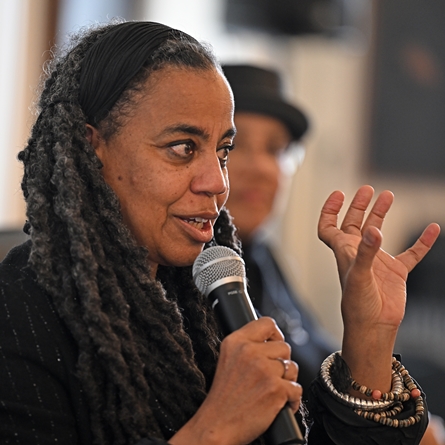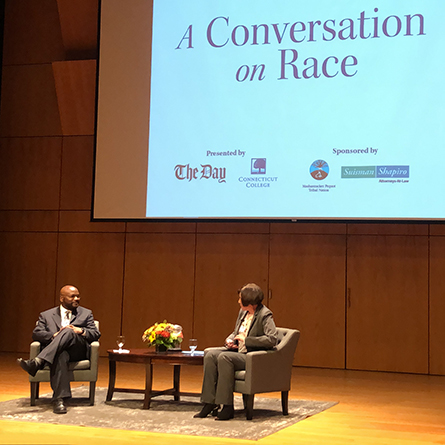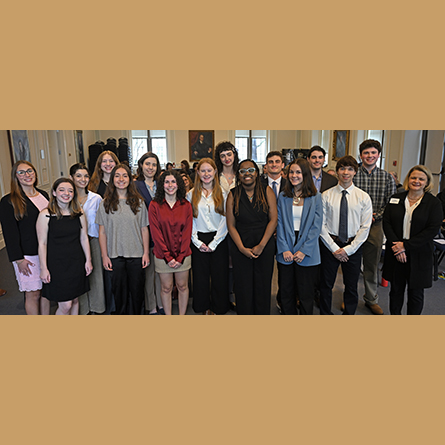
A conversation on race with Chief Justice Richard Robinson
When Richard A. Robinson isn’t busy serving as chief justice of the Connecticut Supreme Court, he teaches people how not to rush to judgment.
It was in that role as a cultural educator that he visited Connecticut College Wednesday night for a spirited conversation about the racial challenges facing the American legal system, and his personal experiences as an accomplished lawyer and judge who still endures subtle displays of discrimination in everyday life. As an example, Robinson described the familiar sound he sometimes hears of car doors clicking locked as he walks past them down the street.
“It’s one of those moments, where as a black man you kind of go, ‘It’s happening again,’ and then you pick yourself up and you go on,” Robinson told the audience in Evans Hall, which included students, staff, faculty and members of the local community. “That’s the kind of thing we need to talk about. Why is that happening? Why are these associations in the back of our head?” he added.
The discussion marked the first installment in a collaborative series of community discussions hosted by Connecticut College and The Day newspaper. Wednesday’s inaugural discussion was led by The Day’s courts reporter, Karen Florin, who interviewed Robinson on a broad range of topics relating to race a bias in the law. Watch the video.
Robinson was sworn in last year as the state’s first black chief justice after serving five years as an associate justice. Prior to joining the state’s top court, he spent more than a decade on other powerful courts in Connecticut, including the Superior and Appellate Courts. For the past 15 years, he has been working with lawyers, judges and other legal professionals to address cultural and racial sensitivity issues.
Robinson argued that productive conversations about race require an honest appraisal of one’s personal biases, even if they’re usually unconscious. He used the analogy of an iceberg tip to describe how most of us make flash judgments about people based on the tiny percentage of overall information we get about them from their external appearances.
“We’re already making value decisions about people based on this 10 percent of the iceberg, but the 90 percent, what you really need to know about them, about how they think, how they live, how they work, who they are—that’s all below that water line,” Robinson said.
Robinson emphasized that having biased thoughts or harboring stereotypical or negative associations based on racial, cultural or socio-economic characteristics doesn’t necessarily make a person racist or bigoted. But he said it’s essential to analyze how those biases manifest or influence a person’s thinking.
“If you don’t know what you’re doing with that information, then you could be making these leaps and associations and making value judgements based on these stereotypes,” he said.
Robinson was also quick to admit that he is certainly not immune to gut-instinct bias at times, and cited a specific case he presided over with a young, black male defendant. He was about to set bond, then caught himself and began digging deeper into the young man’s personal situation. After questioning him about his family life, Robinson realized justice would be better served by showing compassion, and the prosecutor offered the young man a diversionary program instead of sending him to prison.
“I heard from the young man’s family from time to time and got updates about how he was doing very well,” Robinson said, expressing relief that things didn’t turn in a very different direction because of a rash decision he’d made as a judge. “Just imagine if I hadn’t done what I did.”

